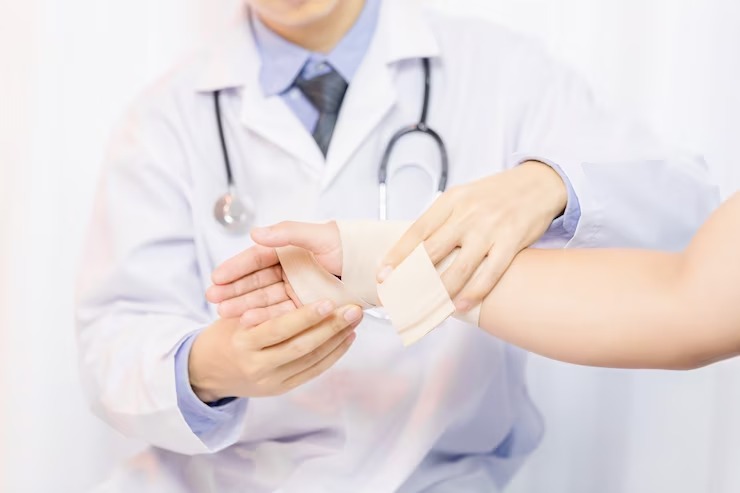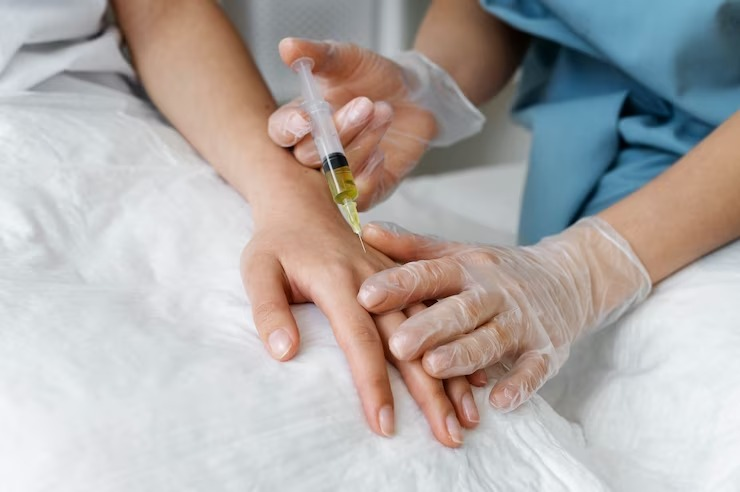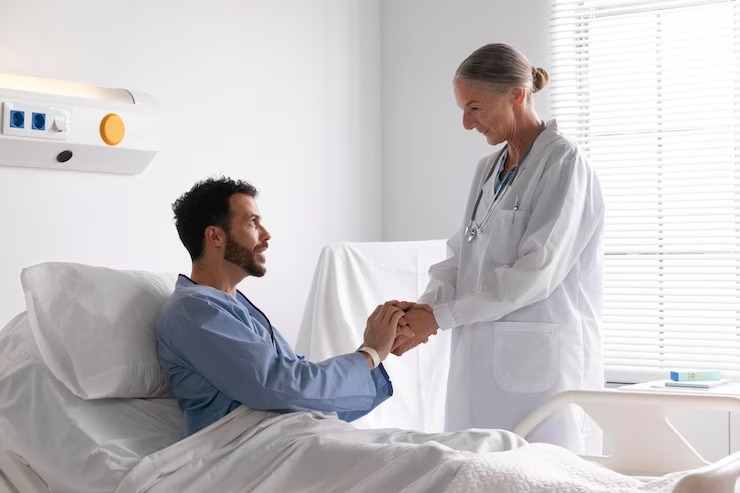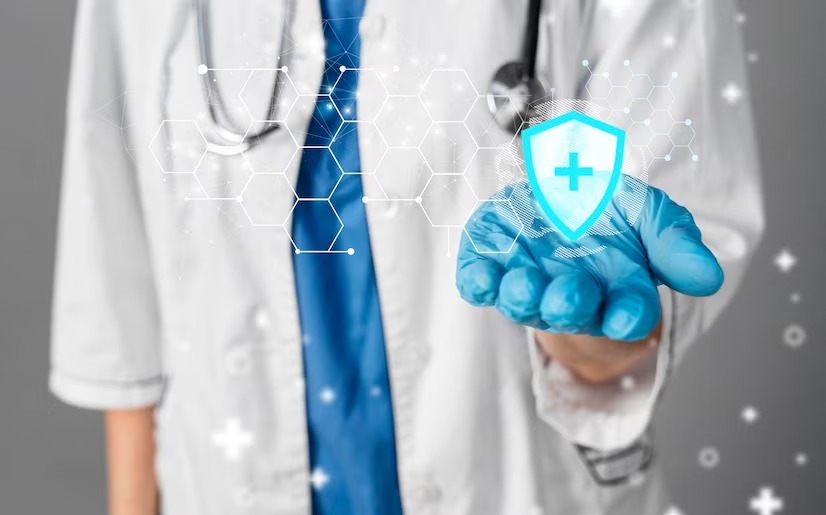Peptides for Wound Healing

Wound healing is a complex biological process that involves several stages, including inflammation, tissue formation, and remodeling. Over the years, researchers have explored various methods to enhance the injury recovery process and expedite healing. One promising approach is the use of peptides for wound healing, including collagen peptides, known for their remarkable ability to promote more effective wound repair. Additionally, the role of human growth hormone (HGH) in improving wound healing and recovery has been studied extensively. This article will delve into the fascinating world of healing peptides and HGH for effective injury recovery. It will uncover their potential and identify the best healing peptides and HGH therapies to accelerate the overall recovery process and improve injury healing outcomes.
Understanding Wound Healing
Before we delve into the specifics of peptides, it’s essential to understand their role in enhancing the healing process. Naturally occurring peptides for healing, such numerous peptides such as mechano growth factor, play a vital role in increasing cell regeneration and promoting effective injury healing. These regenerative peptides stimulate new tissue growth and enhance the human body’s ability to heal injuries. Furthermore, peptides have shown potential in increasing bone density and facilitating body fat loss by promoting body fat-burning and reducing fat stores. Understanding the potential of naturally occurring peptides for enhance wound healing and improve wound recovery, increase cellular repair and increase bone density, and support weight loss can open up new avenues for therapeutic applications.
The Role of Peptides in Wound Healing
Peptides, short chains of amino acids, play a crucial role in various physiological processes within the human body, such as muscle and tissue repair, muscle growth, and healing. These peptides have the ability to enhance tissue repair, modulate inflammation, and stimulate growth elements. Certain peptides, including human growth hormone (HGH) and those derived from the thymus gland, have shown promising results in promoting collagen synthesis, angiogenesis, and epithelial cell migration. These processes are essential for wound recovery and cell regeneration. Through their influence on cellular functions and signaling pathways, these peptides have the potential to improve outcomes in wound recovery and facilitate increased growth elements. Peptide therapy holds promise for supporting muscle and tissue repair, stimulating muscle growth, and aiding in the recovery process.
Collagen Peptides: A Powerful Aid
Collagen stands as the most plentiful protein within the human body, offering essential structural support to diverse tissues, such as the density of bones and the elasticity of the skin. Recently, collagen peptides sourced from hydrolyzed collagen have garnered considerable interest due to their potential in promoting wound healing. These peptides possess bioactive properties that can stimulate collagen production in fibroblasts, the cells responsible for collagen synthesis. By promoting collagen production, collagen peptides improve wound tensile strength and accelerate healing.
Best Peptides for Wound Healing

Several other peptides have also demonstrated promising results in research on injury healing. Here are some of the top peptides known for their effectiveness in promoting healing and accelerating the recovery from injuries:
-
LL-37 – A Versatile Peptide for Wound Healing
LL-37, a naturally occurring antimicrobial peptide, exhibits antimicrobial properties and promotes injury healing of muscle tissue cell. It stimulates the migration and muscle cell growth of keratinocytes and fibroblasts, two key cell types involved in muscle cells’ growth hormone injury recovery.
-
GHK Cu – A Copper Peptide for Enhanced Healing
GHK-Cu, a copper peptide, has demonstrated impressive healing of injury properties. It promotes collagen synthesis cell regrowth, angiogenesis muscle growth, and granulation tissue formation, accelerating and enhancing injuries healing itself.
-
TGF β – A Multifunctional Growth Factor
Transforming growth factor-beta (TGF-β) is a multifunctional peptide that regulates various cellular processes, including healing of various physical injuries. It stimulates the migration cell growth of fibroblasts and promotes the production of collagen, facilitating the healing of physical damages and benefits the closure of wounds.
-
HBD-2 – An Immunomodulatory Peptides for healing
Human Beta-Defensin 2 (HBD-2) is an antimicrobial peptide that fights against pathogens and plays a role in injuries healing peptides. It possesses immunomodulatory potent antioxidant properties and promotes the proliferation and migration of keratinocytes in the immune system.
Peptides for Accelerated Recovery

In addition to the aforementioned peptides, several others have demonstrated potential in accelerating tissue injury recovery. Peptide-based growth factors, such as PDGF (platelet-derived growth factor) and EGF (epidermal growth factor), are examples of peptide therapies that stimulate cell proliferation and facilitate the regeneration of damaged tissue. Furthermore, peptides like AcSDKP (N-Acetyl-Ser-Asp-Lys-Pro) have been discovered to regulate inflammation and enhance wound closure.
Signs of Healing Wounds
Recognizing the signs of a healing wound is crucial for monitoring progress and ensuring proper recovery. Here are some common signs that indicate a wound is healing:
- Reduced pain or discomfort at the wound site
- Decreased redness and swelling
- Formation of granulation tissue (pinkish, healthy tissue)
- The appearance of new blood vessels (angiogenesis)
- Gradual closing of the wound edges
- Development of a scab or crust over the wound
- Itching or tingling sensation as the nerves regenerate
Best Antibiotic Ointment for Wound Healing
In addition to using peptides for skin wound healing itself, antibiotic ointments can aid injuries healing by preventing infections. Here are some popular and effective antibiotic ointments for healing of injuries:
Neosporin:
Neosporin, a widely recognized and trusted brand, contains a combination of antibiotics (neomycin, polymyxin B, and bacitracin) that help prevent and treat infections.
Bacitracin:
Available over the counter, bacitracin is an effective antibiotic ointment that combats a wide range of bacteria commonly found in wound infections.
Polysporin:
Similar to Neosporin, Polysporin combines two antibiotics (bacitracin and polymyxin B) to provide broad-spectrum coverage against bacteria.
Benefits of Wound Healing Peptides
-
Tissue Regeneration:
Injury healing is a complex process involving various mechanisms to improve wound healing, muscle cell regrowth skin cell regeneration. When an injury occurs, cell renewal, the body’s natural response is to initiate tissue rebuild to replace damaged or lost tissue. This regenerative process aims to restore the structural integrity, promote muscle growth, and regain the functionality of new blood vessels in the affected area. By supporting effective wound treatment, the body can naturally facilitate the regrowth of new muscle cells and increase the cellular repair of the tissue, aiding in the recovery and restoration of muscle mass.
-
Closure and Protection:

Injury healing is a complex process involving various mechanisms to accelerate wound healing and recovery. One approach to facilitate faster recovery is the use of popular peptides known for their regenerative properties. These peptides have been found to promote cell regrowth, fight inflammation, and support effective wound repair. By harnessing the power of these peptides for healing, the whole human body can naturally facilitate the regrowth of new muscle tissue, aiding in the recovery and restoration of muscle mass. This promotes physical healing and the restoration of functionality in the affected area.
-
Restoration of Function:
Injury healing facilitates the restoration of normal tissue, immune system, and central nervous system functions after physical effects. It enables injured tissues, as well as their immune system, to regain proper functionality. This applies to various systems such as muscles, adipose tissue, nerves, and blood vessels. This process supports the restoration of cardiac function, immune response, sensory perception, and other physiological processes, ultimately aiding in movement and overall well-being.
-
Pain Relief:
The healing process not only brings about the full healing benefits of tissue repair but also plays a crucial role in fighting inflammation and in reducing pain associated with wounds. As tissues regenerate and inflammation subsides, the discomfort and sensitivity surrounding the wound usually diminish. This healing process is especially important in alleviating joint pain, as it allows for restoring normal joint function and alleviating pain and discomfort. Effective wound healing is thus vital for promoting overall well-being and improving joint health.
-
Prevention of Complications:
Proper healing of injuries minimizes the risk of complications when treating injuries, such as chronic wounds, infections, and scarring. It ensures that the skin wound healing method progresses naturally occurring smoothly, reducing the likelihood of long-term problems.
Side Effects of Wound Healing Peptide:
-
Scarring:
During healing, scar tissue forms to repair the wound. Depending on the wound’s size, depth, and location, the resulting scar may be more or less noticeable. Some scars may cause cosmetic concerns or restrict movement if they develop in areas with high tension or joint mobility.
-
Infection:
While injury healing aims to prevent infection, microbial invasion is always risky, especially if proper wound care and hygiene practices are not followed. Infections can delay healing, increase pain, cause inflammation, and require medical intervention.
-
Delayed Healing:
Certain factors, such as poor blood supply, underlying health conditions (e.g., diabetes, immunodeficiency), nutritional deficiencies, or medications, can impede routine healing of injuries. In such cases, wounds may take longer or not heal entirely without medical intervention.
-
Excessive Scarring:
The injuries can sometimes result in abnormal scarring, such as hypertrophic scars or keloids. These scars may be raised, thick, itchy, and cosmetically displeasing. They can be more common in individuals with a genetic predisposition to such scarring or those who experience excessive inflammation during healing.
-
Adhesions:
Adhesions are bands of scar tissue that can form between internal organs or tissues during recovery. Depending on their location and severity, they may cause complications by restricting movement or impairing organ function.
Frequently Asked Questions
Q1. Are peptides safe to use for wound healing?
Yes, peptides, including amino acids, have been extensively studied and are generally considered safe for healing injuries. However, it is essential to consult with a healthcare professional before incorporating peptides containing amino acids into your wound care regimen.
Q2. Can peptides replace conventional wound care methods?
Peptides should not replace traditional wound care methods but serve as complementary treatments. Using peptides under medical supervision and established wound care practices is recommended.
Q3. How soon can peptides show results in wound healing?
The time it takes for peptides to yield visible results in the healing of injuries varies depending on factors such as the severity of the wound and the specific peptide therapy used. Following the prescribed treatment plan and consulting with a healthcare professional for personalized guidance is essential.
Q4: Does BPC-157 heal wounds?
Yes, BPC-157 has shown potential in promoting healing of injuries. It is a synthetic peptide derived from a natural protein found in the gastric juices of humans. BPC-157 has been studied for its ability to accelerate the regeneration of tissue, reduce inflammation, immune system and immune function, and enhance the healing method.
Q5: What are the best peptides for wound healing?
Several peptides have been studied for their efficacy in connective tissue repair of injuries, skin cell regeneration, and injury healing. Some of the best peptides for healing of the various connective tissue injuries and connective tissue repair include (1) Epidermal Growth Factor (EGF) peptides, (2) Transforming Growth Factor-Beta (TGF-β) peptides, (3) Platelet-Derived Growth Factor (PDGF) peptides, and (4) Thymosin Beta-4 (TB-4). These peptides have shown positive effects on wound repair and connective regeneration of tissues from injuries and regrowth.
